Sweet superstitions & Symbolism: The History of the Wedding Cake
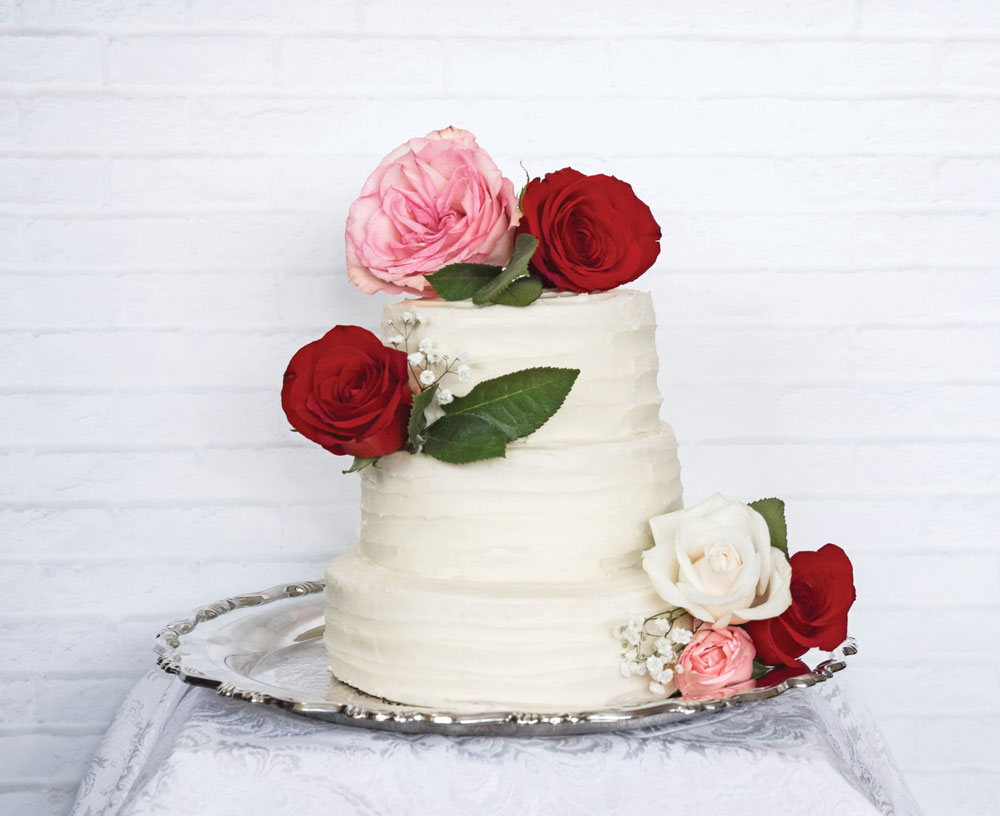
Story, Recipe and Photos by Kaitlin Hill
In a game of word association, the term “wedding” conjures a deluge of delightful imagery.
However, more than brides in bedazzled dresses, elaborate bouquets and the ever-popular open bar, marriage is the ultimate celebration of love. It is a reflection of ancestral and cultural traditions and, since antiquity, the subject of widely acknowledged superstitions.
Perhaps, the most symbolic wedding convention of all is the towering ivory cake—the centerpiece of celebrations globally. More than just an emblematic end to a special evening, wedding cakes are also big business. Cake prices can range from hundreds of dollars to the world’s most expensive wedding cake, valued at $52 million and covered in 4,000 diamonds. Yet, this wedding staple stems from ancient Roman roots, where the cakes were modest, homemade and host to a wealth of superstitions.

Far from the multi-tiered edible sculptures that present-day partners devour, the ancient Romans sealed their nuptials with a piece of wheat or barley bread that was more akin to a scone. The groom would break the humble treat over the bride’s head believing that this act ensured a life of good fortune and fertility. Instead of receiving plated slices, guests scrambled for crumbs, hoping to taste prosperity for themselves.
When Emperor Claudius invaded Britain in 43 AD, he brought with him this delicious, albeit odd, Roman tradition. As the trend spread, the Brits took it a step further, hurtling bread at the bride— as always, to promote fertility.
In medieval England, sweets of Roman influence were combined with buns, biscuits and scones, piled high and presented to the lovebirds. English folklore held that if the couple could kiss over the buns without tipping the mound, they would enjoy a lifetime of happiness.
In 17th-century England, the trending matrimonial indulgence was “Bride’s Pye,” an early predecessor of the modern wedding cake. The extravagantly decorated pie, first documented in Robert Mays’s The Accomplisht Cook published in 1685, included an array of unusual ingredients, such as oysters, lambstones, cockscombs and pine kernels. The pastry also concealed inedible elements, such as glass rings and buttons. Much like today’s bouquet, the female guest to find the ring was destined to be the next married. Unfortunately, receiving the button augured a lifetime of spinsterhood.
Over time and with the introduction of refined sugar, bride pie became bride cake—a shortcrust-and-currant sandwich dusted with sugar. Finally, in the Victorian Era, the monumental white wedding cake of today emerged.
Perhaps the first modern-style wedding cake—and certainly the most notable, coated entirely in white icing made from expensive refined sugar—was Queen Victoria and Prince Albert’s, who married in 1840. The preparation of icing used on Victoria’s cake would be renamed “royal icing” in her honor.
The pure white cake, which was more than nine feet in circumference, was an expression of Victoria’s purity and wealth. But the symbolism didn’t stop there. The London Times reported that the cake featured a small replica of a dog representing faithfulness, a pair of turtledoves for innocence and a handful of cupids illustrating love.
Today, wedding cakes can be as imaginative as the couples that cherish them, and the options are limitless. However, the significance, superstition and symbolism remain the same. As just-wed pairs cut and pass along pieces of their chosen treat, they are participating in the age-old tradition of generosity, the human desire for shared prosperity and the belief that love is love, no matter how you slice it.
If you want to take a tip from the ancient Romans and make your own, follow my recipe for an easy, elegant cake. The textured tiers, pure white icing and fresh floral touches create a cake fit for royalty!
Ingredients:
4 sticks of unsalted butter, at room temperature
4 cups of granulated sugar
4 eggs, separated
2 tablespoons of vanilla extract
4 cups of cake flour
2 teaspoons of salt
2 tablespoons of baking powder
2 cups of buttermilk
Vanilla Buttercream:
6 sticks of unsalted butter at room temperature
12 cups of confectioners’ sugar, sifted
1 tablespoon of vanilla extract
a pinch of salt
Directions:
Preheat your oven to 325°F.
Grease two 9-inch, two 7-inch and two 6-inch cake pans.
Line the bottom of the pans with parchment and then grease the parchment. Set the pans aside.
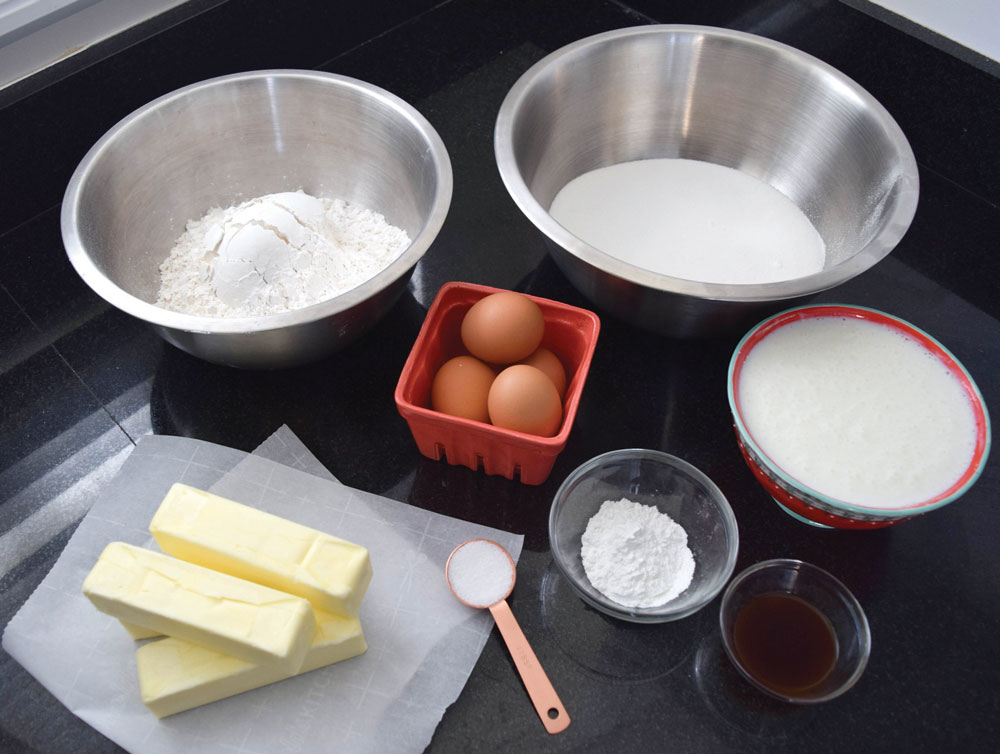
Place the butter and sugar in the bowl of a stand mixer fitted with a paddle attachment. A large bowl and hand mixer will work, too.
Cream the butter and sugar together until light and fluffy.
This will take about two to three minutes.
Add the egg yolks and vanilla, and mix until just combined.
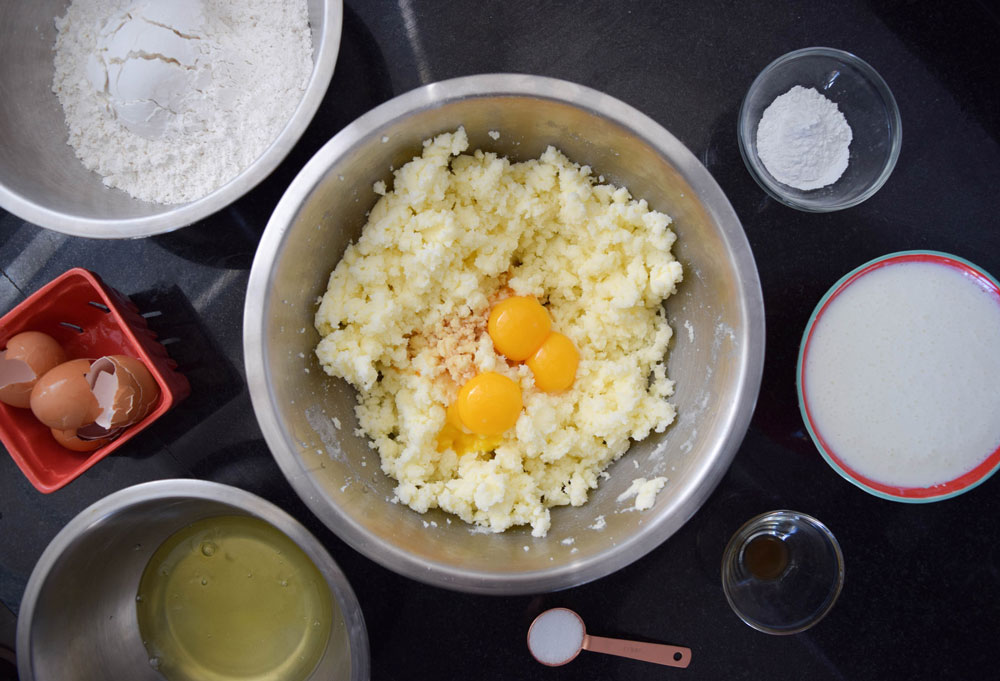
In another bowl, whisk together the flour, salt and baking powder.
Add the flour to the butter and sugar mixture in three additions, alternating with two additions of buttermilk.

Mix until just combined.
In a third bowl, whip the egg whites until they are glossy, opaque and hold firm peaks. This will take about four to five minutes.
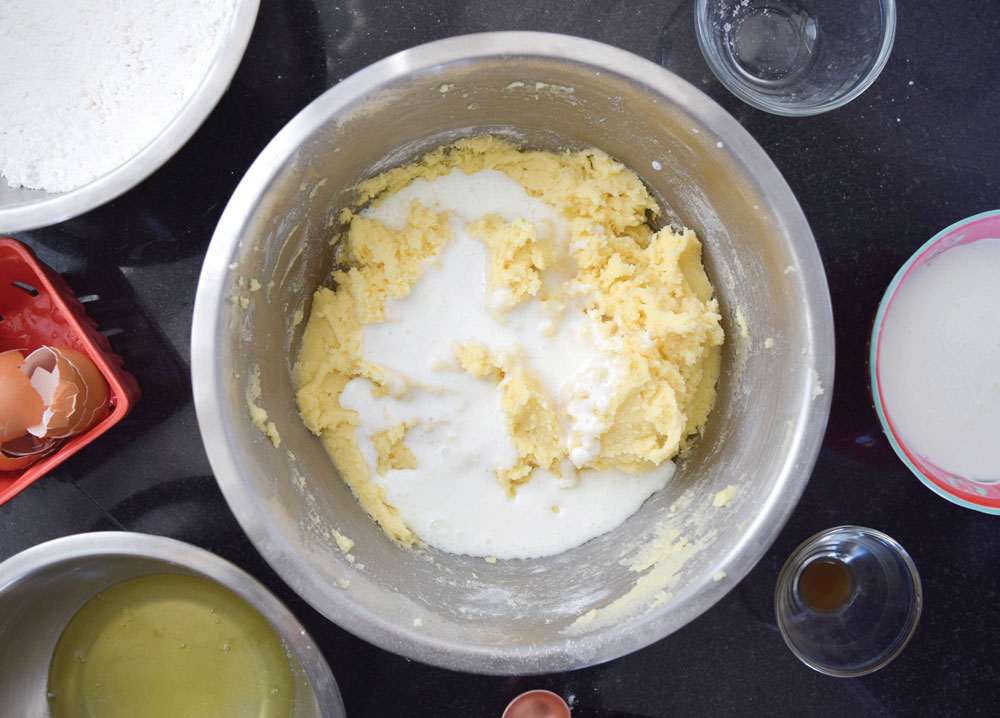
Using a spatula, gently fold the egg whites into the cake batter, being careful not to deflate them.
Next, portion the cake batter into the pans. If you have a scale, you can measure out the batter precisely.
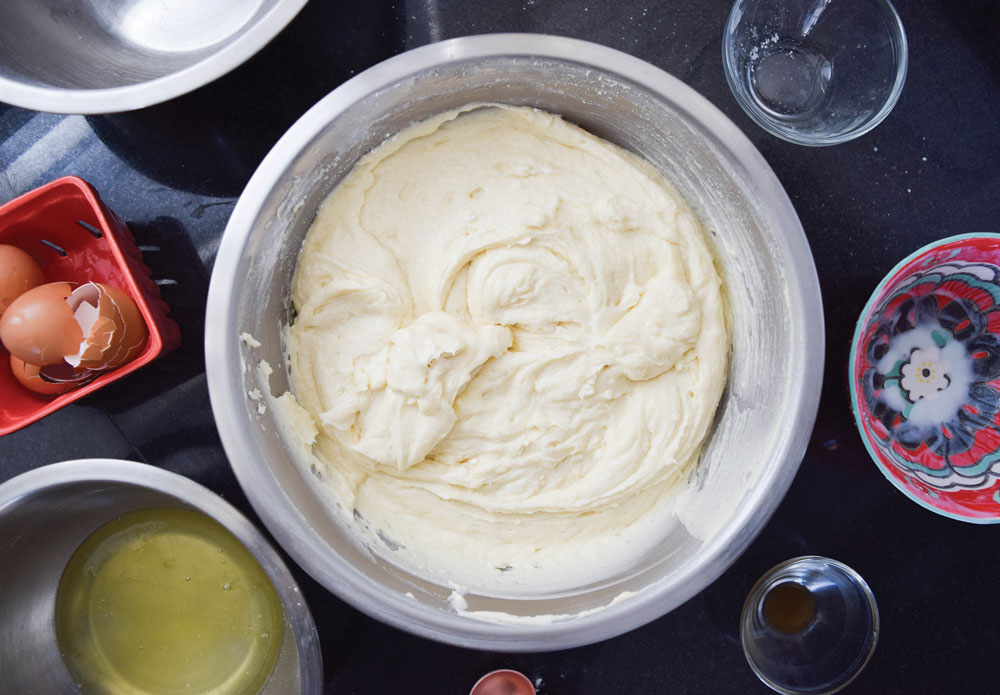
Spread 19 ounces of batter into each of the 9-inch pans, 12 ounces of batter into each of the 7-inch pans and 10 ounces of batter into each of the 6-inch pans.
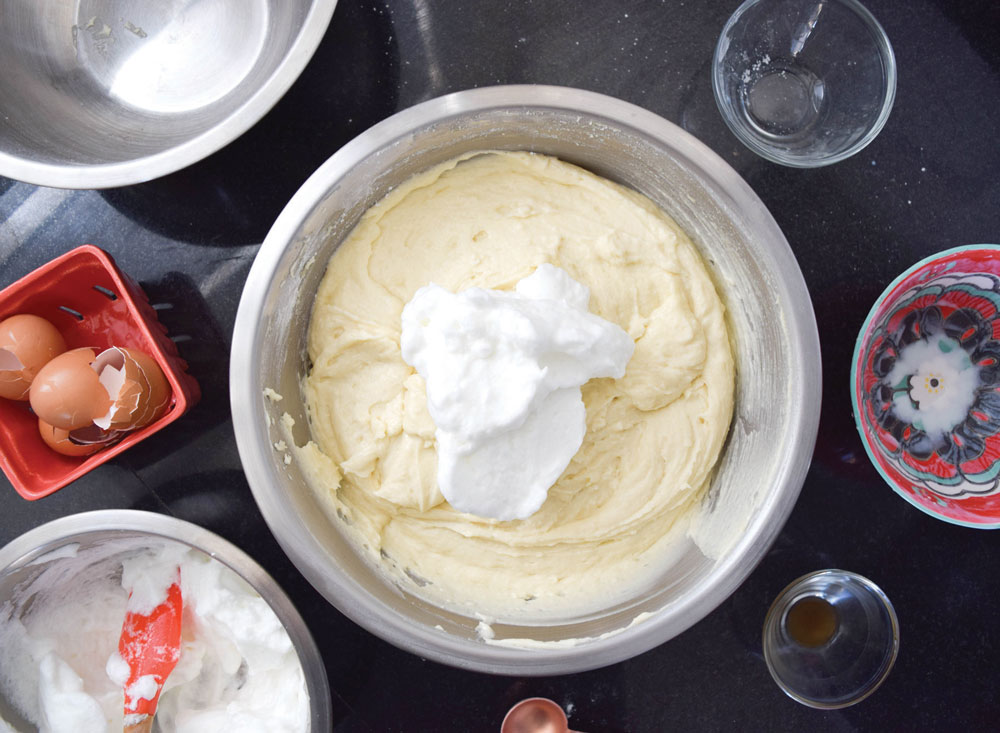
Place the cake pans in the oven and bake for 30–35 minutes. The cakes are finished when they have pulled away from the edges of the pans and an inserted toothpick comes out clean.
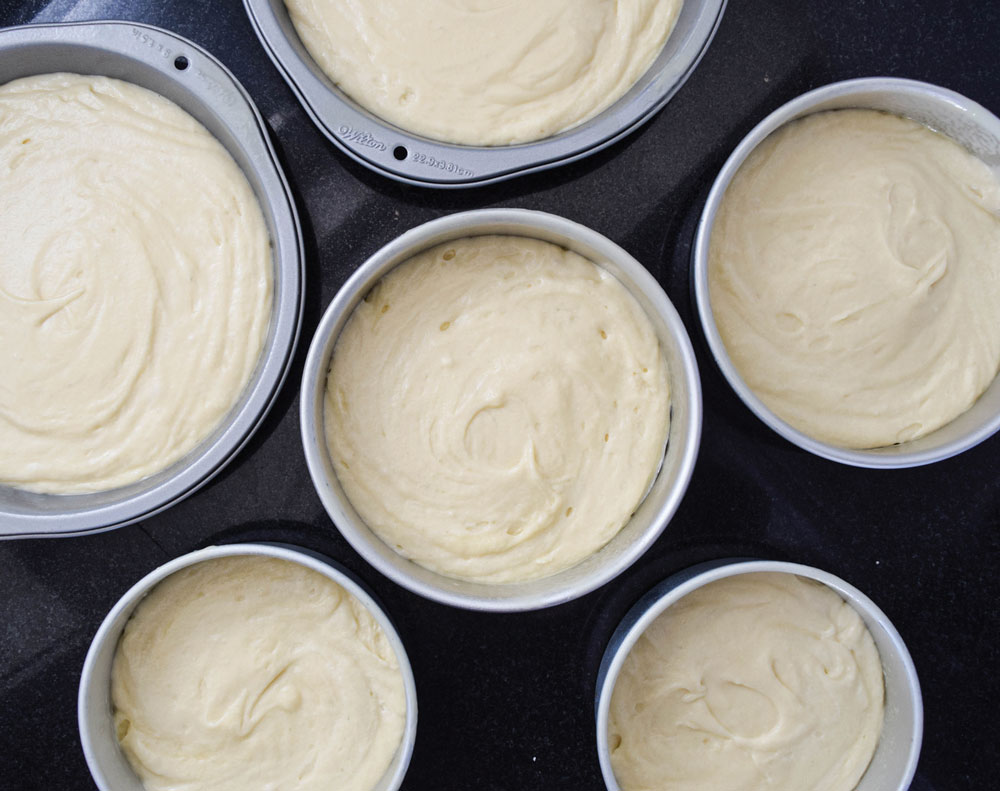
Leave the cakes in their pans for 15 minutes before turning out onto a rack to cool completely.
While the cakes cool, make the buttercream.
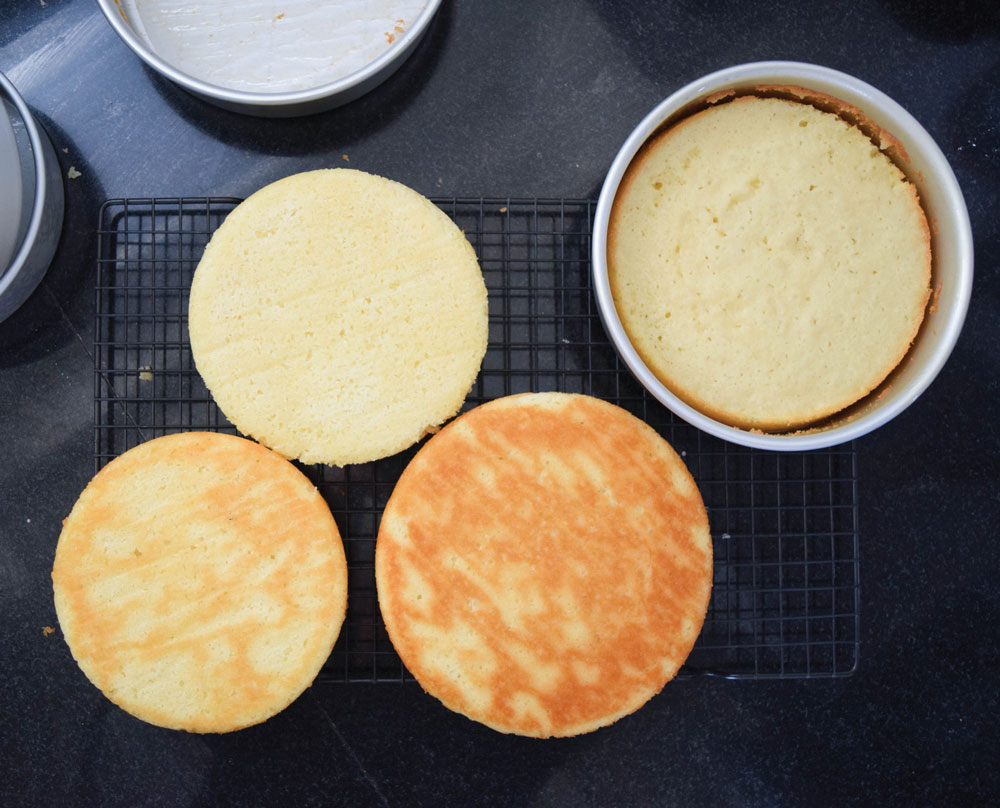
Place the butter in the bowl of a stand mixer fitted with a paddle attachment or in a large bowl if you plan to use a hand mixer.
Beat the butter until creamy, about two minutes.
Add the sifted confectioners’ sugar a little at a time to prevent sugar from flying everywhere. Continue to add the sugar in batches until completely incorporated. Add the vanilla and pinch of salt.
The cake will be assembled in three individual parts before being stacked as a whole. Begin with the two 9-inch cake rounds that will form the base. Place one of the rounds on a cake board that is slightly smaller than the cake itself. Place a few scoops of frosting on top of the cake.
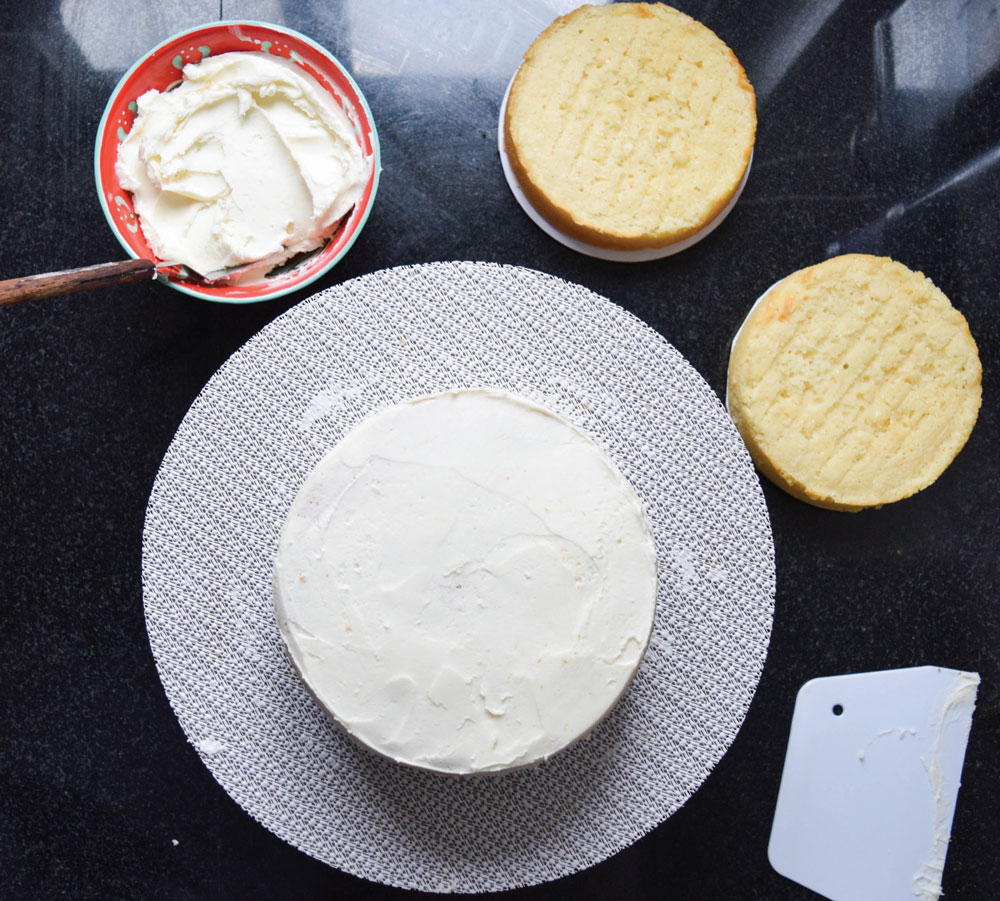
Using an offset spatula, smooth the buttercream into an even layer. Top the buttercream with the second 9-inch cake layer and press down slightly. Spread a thin layer of frosting over the top and sides of the entire cake. Use the offset spatula to remove any excess icing from the cake.
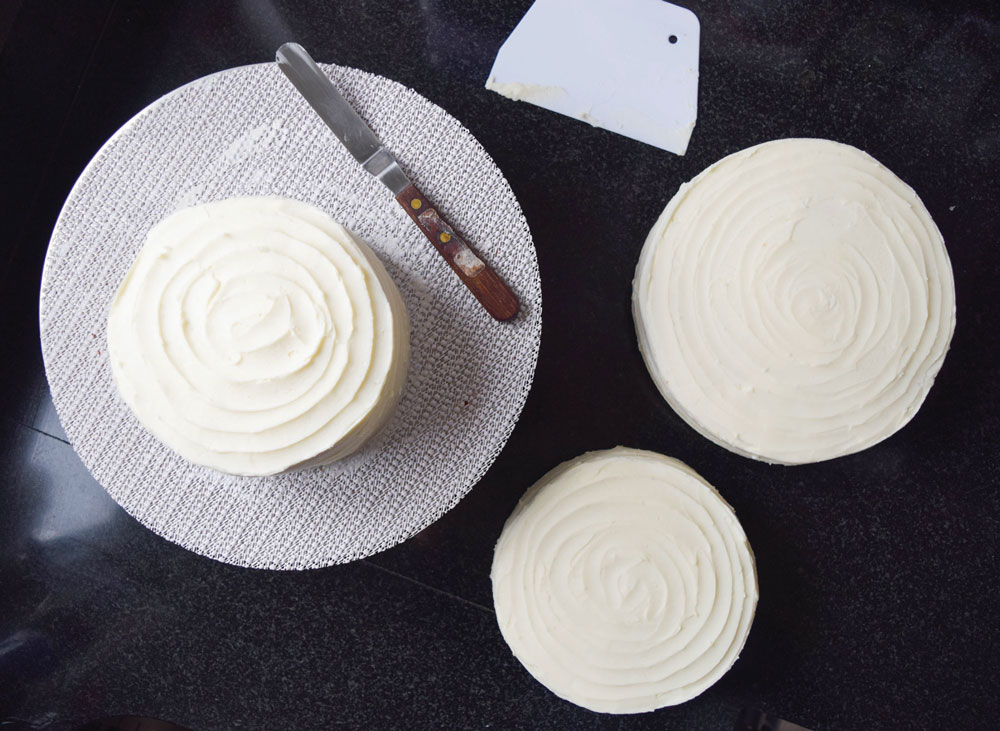
This is a “crumb coat” which serves as a smooth base layer and crumb catcher before the final layer of frosting is applied.
Repeat this entire process with the 7-inch cake layers and the 6-inch cake layers. Place all three cakes in the fridge to set for 20 minutes.
Once the cakes have set, they are ready for their final coating of buttercream. Start with the 9-inch cake.
Smooth a layer of buttercream over the crumb coat.
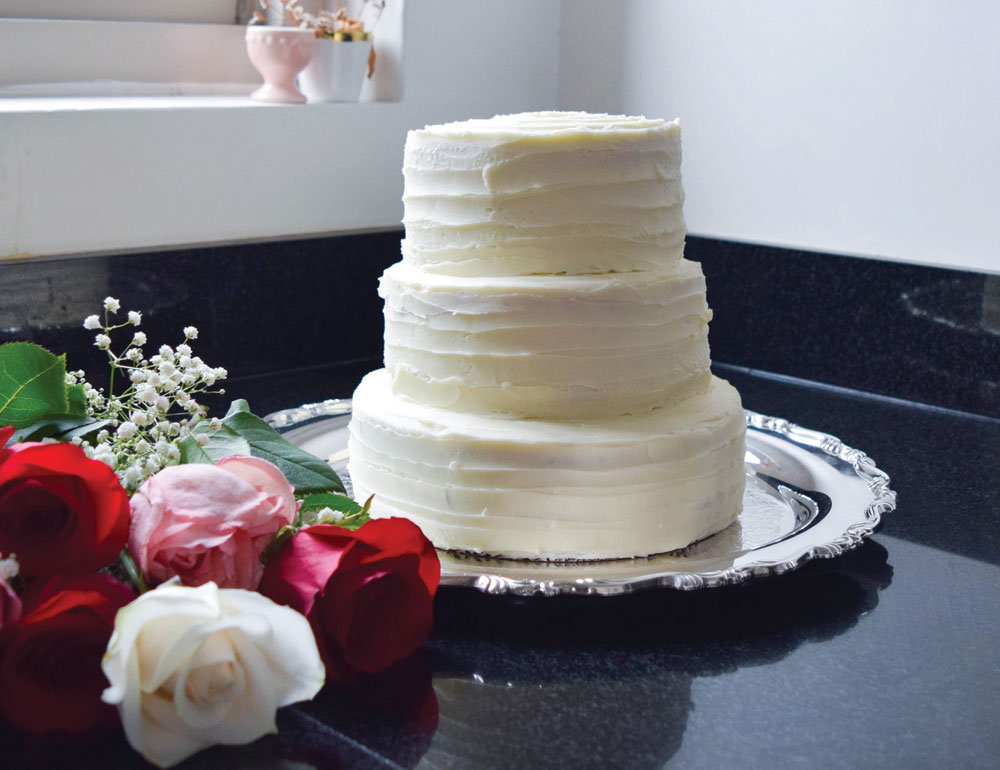
For a textured look, lightly press your knife or small offset spatula into the side of the cake while spinning it. As the cake rotates, move the spatula up the side, creating the textured effect.
Do the same on top or omit this step entirely and leave the frosting smooth.
Repeat this process with the two remaining tiers.
To assemble, place the 9-inch base on your serving tray.
Carefully stack the 7-inch cake on top of the foundation, and the 6-inch cake on top of the 7-inch tier.
Decorate the cake as you please. For a natural look, skip the elaborate piping and decorate with flowers from your local florist. You can even ask that they match your wedding venue’s décor or ceremonial bouquets.
Kaitlin Hill is a Culinary Institute of America trained chef and the creator of the Emotional Eats Blog, where she shares her original recipes and studies in food history. To read more, visit www.emotionaleats.com.
This article first appeared in the February issue of Middleburg Life.


